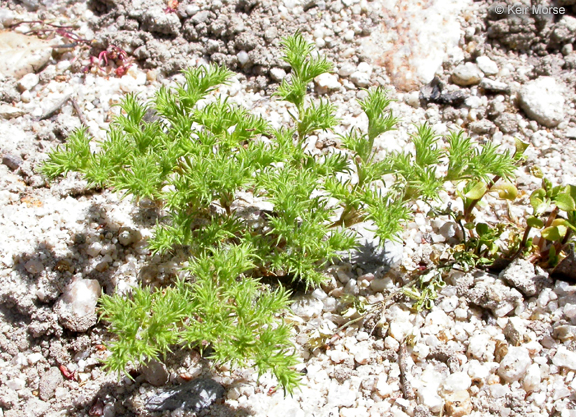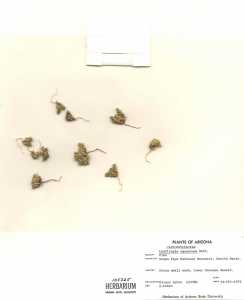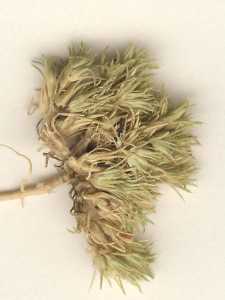Plants 1-12 cm, covered with stalked glands, somewhat fleshy. Stems stiff, usually dichotomously branched at or near base, variously branched or not distally. Leaves usually connate proximally into short, scarious sheath; stipules filamentous to spinose, 0.4-1.5 mm; blade erect to ± recurved, 0.4-5.5 mm, apex blunt to spine-tipped. Inflorescences often secund. Flowers cleistogamous; sepals erect to squarrose, resembling leaves (especially outer pair), usually with 2 filamentous to stiff lateral spurs, 1.8-6.5 mm, becoming hardened, margins often scarious. Capsules 3-angled, 1.5-3.7 mm, 2- 5 times as long as sepals. Seeds 0.4-0.7 mm.
Flowering spring-summer. Sandy, gravelly areas; 0-2100 m; Ariz., Ark., Calif., Kans., Nebr., Nev., Okla., Oreg., Tex., Utah, Wash., Wyo.; Mexico (Sonora).
R. C. Barneby and E. C. Twisselmann (1970) recognized four subspecies of Loeflingia squarrosa, for the most part allopatric. After a reevaluation of the characters used in their key, we feel that those entities are best regarded as geographical races of the species. This is justified largely by both the overlap in expressions of and the lack of correlation of the characters. Barneby and Twisselmann placed major emphasis on habit and stature, including the position of the primary dichotomy of the plant and the location of intermediate monochasial branching subsequent to last branching, if present. In their words, 'We have developed an objective formula for describing the permutations of branching, but believe that the intangible quality of habit permits intuitive sorting of material into categories that coincide with comprehensive dispersal patterns.' They used, in addition to habit, the size and stiffness of stipules and sepal spurs, size of sepals and their orientation, size and shape of capsules, and size of seeds to discriminate between subspecies.
Duration: Annual
Nativity: Native
Lifeform: Forb/Herb
General: Glandular pubescent, somewhat fleshy, stiff stems, dichotomously branched at or near the base, variously branched, prostrate or decumbent 5-15 m long.
Leaves: Usually connate proximally into short, scarious sheath, stipules filamentous to spinose, 0.4-1.5 mm; blade erect to recurved, 0.4-5.5 mm apex blunt to spine-tipped.
Flowers: Secund inflorescence, flowers. Sepals similar to leaves 4-5 mm long, recurved, rigid, bristle-tipped; calyx squarrose owing to spreading-recurved tips of sepals; petals minute or wanting; stamens 3-5, 0.4-.7 mm long, equaling ovary at anthesis.
Fruits: Oblong capsule 3-angled, 1.5-3.7 mm, 2-5 times as long as sepals.
Ecology: Found in sandy and gravelly soils from sea level to 7,000 ft (2134 m); flowers March-April.
Ethnobotany: Unknown
Etymology: Loeflingia is named for Pehr Lofling (1729-1756) a Swedish botanist, while squarrosa means scaly or rough.
Synonyms: None
Editor: SBuckley, 2010








